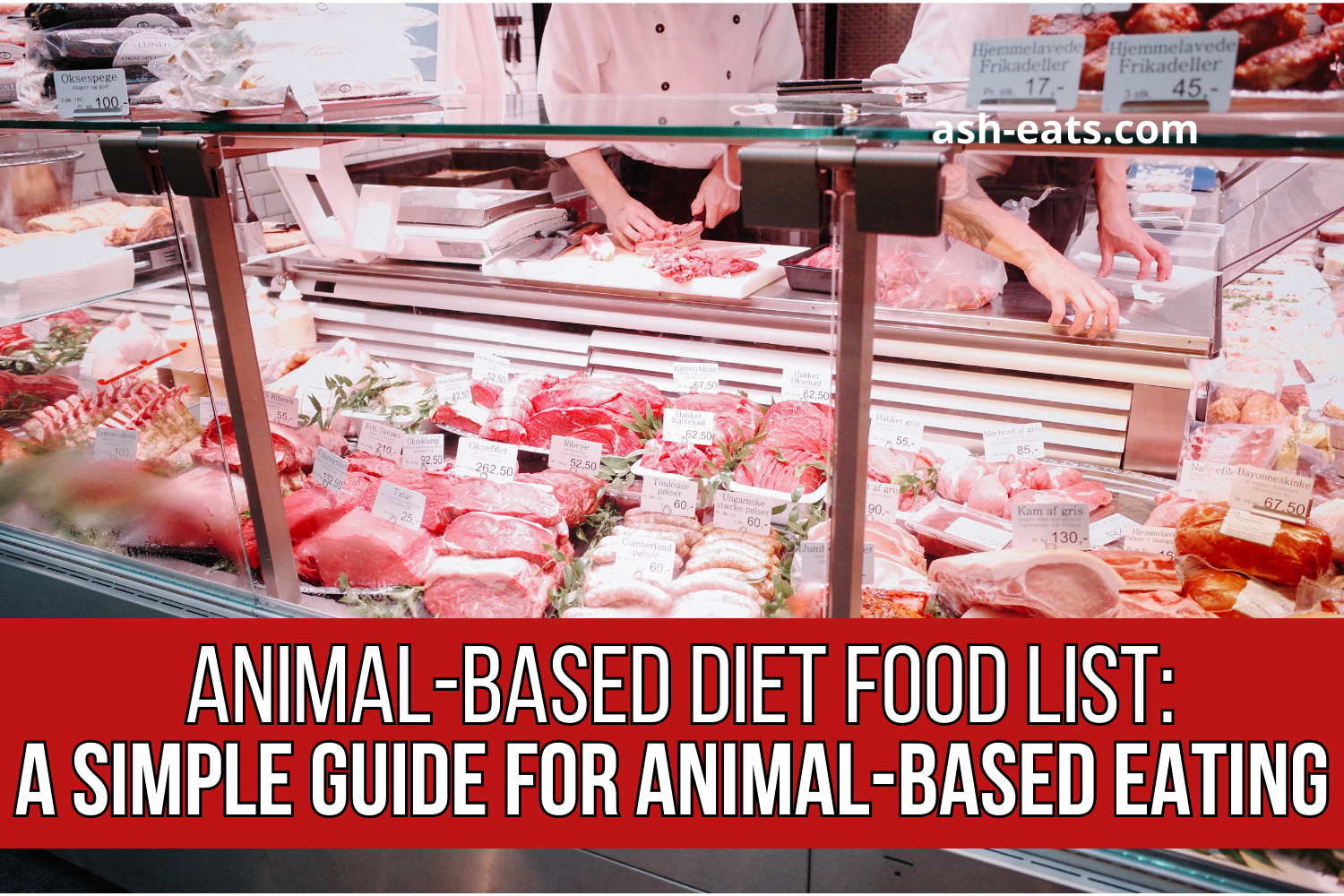
Published on January 13, 2021 by Ashley Rothstein
You’re probably here because you’re looking for an animal-based diet food list. Or maybe you just want to learn more about animal-based eating.
Paul Saladino – double board-certified medical doctor and owner of Heart & Soil Supplements – coined the term “animal-based” a couple of years ago as a spin-off of the term “plant-based.”
While the plant-based diet philosophy suggests that eating mainly plants creates optimal health, Paul’s animal-based diet philosophy is reversed. He believes that eating mainly animals (including organs) is what creates optimal health.
If you’re new to the animal-based game, this post will serve as a simple guide to the diet philosophy and will walk you through how to begin eating this way. animal-based diet food list
What does “animal-based” mean?
People define the term differently, so I thought I’d start out by clarifying how I define “animal-based.”
Here are the different definitions I have seen out there:
- Animal-based means you eat only foods from Paul’s low toxic foods list (and maybe some from his medium toxic list). People who follow this definition do not stray from Paul’s list. Any food not found on Paul’s low toxic list (and/or maybe the medium toxic list) is not considered animal-based.
- Animal-based means the majority of the foods you eat are animal foods, and you also eat some plants. People who follow this definition focus more on ratios. As long as the majority of your diet is animal foods, then your diet is considered animal-based, even if you occasionally eat plant foods from Paul’s high toxic list.
- Animal-based means you eat only animal foods. This definition is wrong, but some people do perceive the diet this way. Eating only animal foods is considered carnivore, which is not animal-based…similar to how being a vegan is not the same thing as eating plant-based. Carnivore is technically animal-based since the person is eating 100% animals and no plants, but animal-based does not automatically mean carnivore.
Here is how I define animal-based:
I combine the first two bullet points. I call my diet animal-based as 95% of the foods I eat are from Paul’s low toxic foods list and most of them are animal foods. Things like meat, animal fats, eggs, raw dairy, and the sweet and non-sweet fruits he recommends.
The other 5% are foods that are found on his medium and high toxic foods list. I eat them in moderation because I enjoy them. Some examples of these foods are iceberg lettuce, onions, garlic, pickles, cassava, tomatoes, sweet potatoes, carrots, and cumin.
So, in a nutshell:
- I eat mostly animal foods
- I eat some plants
- Most of the foods I eat are from Paul’s low toxic foods list
- A small percentage of the foods I eat are from Paul’s medium and high toxic foods list
This is how I define animal-based, although I think either of the first two bullet points at the beginning of this section are fair definitions. Regardless of the definition, the hallmark of this diet philosophy is that you consume mostly animal foods and minimize toxicity when it comes to eating plants. animal-based diet food listt
How to eat an animal-based diet
If you’re new to all of this, I suggest choosing a definition that resonates with you and rolling with it.
If you’re someone who likes following a precise road map, go with this definition:
Definition #1: Animal-based means you only eat foods from Paul Saladino’s approved low toxic foods list (and maybe some from his medium toxic list).
If this is you, you’ll exclusively eat the foods on his low (and medium in moderation) toxic lists, with the majority of the foods you eat being animal foods.
And if you’re someone who likes autonomy and flexibility (and maybe you’ve already experimented with your food intake and know what you can/can’t tolerate for the most part), go with this definition…
Definition #2: Animal-based means the majority of the foods you eat are animal foods, and you also eat some plants.
If this is you, eat the foods on his low and medium toxicity lists (with the majority of what you eat being animal foods), and if you tolerate some foods on his high toxicity list, include them in moderation if you enjoy them. animal-based diet food list
Want to learn more about oral magnesium vs. transdermal magnesium, the pros and cons of both, and how to figure out which method is for you?
Read this post here to learn more.
Animal-based diet food list
Alright, so what do you eat if you’re eating animal-based?
In a nutshell, the foods on this graphic.
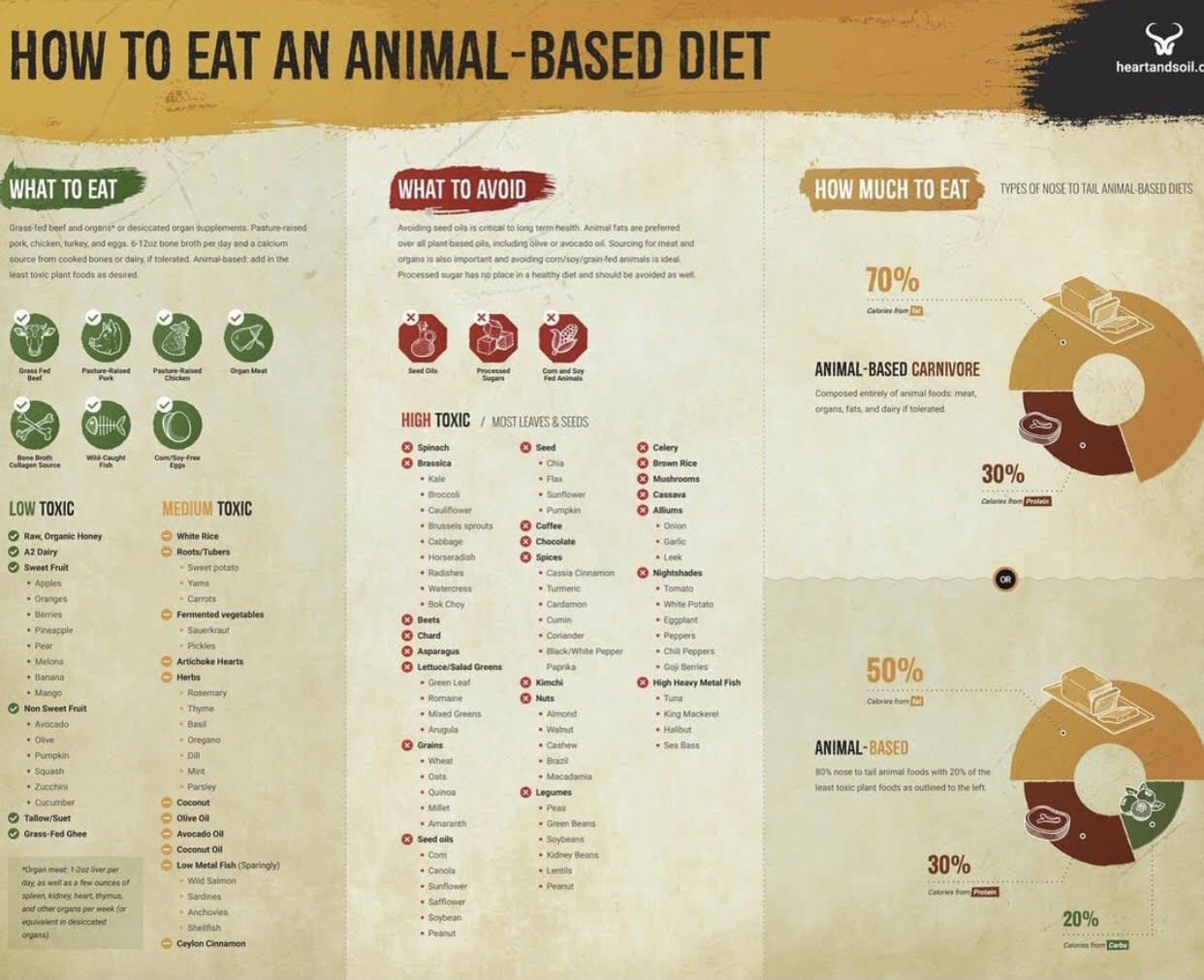
Here is a typed out list of the foods for easy reference:
LOW TOXIC
- Grass-fed beef
- Pasture-raised pork
- Pasture-raised chicken
- Organ meat
- Bone broth
- Wild-caught fish
- Corn/soy-free eggs
- Raw, organic honey
- A2 dairy
- Sweet fruit (apples, oranges, berries, pineapple, pear, melons, banana, mango)
- Non-sweet fruit (avocado, olive, pumpkin, squash, zucchini, cucumber)
- Tallow/suet
- Grass-fed ghee
MEDIUM TOXIC
- White rice
- Roots/tubers (sweet potatoes, yams, carrots)
- Fermented vegetables (sauerkraut, pickles)
- Artichoke hearts
- Herbs (rosemary, thyme, basil, oregano, dill, mint parsley)
- Coconut
- Olive oil
- Avocado oil
- Coconut oil
- Low metal fish – sparingly (wild salmon, sardines, anchovies, shellfish)
- Ceylon cinnamon
HIGH TOXIC
- Spinach
- Brassica (kale, broccoli, cauliflower, brussels sprouts, cabbage, horseradish, radishes, watercress, bok choy)
- Beets
- Chard
- Asparagus
- Lettuce/salad greens (green leaf, romaine, mixed greens, arugula)
- Grains (wheat, oats, quinoa, millet, amaranth)
- Seed oils (corn, canola, sunflower, safflower, soy, peanut)
- Seed (chia, flax, sunflower, pumpkin)
- Coffee
- Chocolate
- Spices (Cassia cinnamon, turmeric, cardamom, cumin, coriander, black/white pepper, paprika)
- Kimchi
- Nuts (almond, walnut, cashew, brazil, macadamia)
- Legumes (peas, green beans, soybeans, kidney beans, lentils, peanut)
- Celery
- Brown rice
- Mushrooms
- Cassava
- Alliums (onion, garlic, leek)
- Nightshades (tomato, white potato, eggplant, peppers, chili peppers, goji berries)
- High heavy metal fish (tuna, king mackerel, halibut, sea bass)
Depending on your animal-based philosophy, you’ll either eat foods from the low toxic list only, the low/medium toxic lists, or the low/medium toxic lists plus some foods from the high toxic list if you tolerate them.
The majority of the foods you eat should be animal foods.
(I bolded the animal foods in the lists above.)
Paul’s team offers three options for ratios when it comes to eating animal-based:
- 80-90% animal foods + 10-20% of the least toxic plant foods
- 90% animal foods (with an emphasis on eating organs) + 10% of the least toxic plant foods
- Meats, organs, and animal fats only (this is considered carnivore)
Note that the above styles are suggestions, not rules. I’ve noticed that some people eat a bit more plant foods (say, 30%) and others eat less (say, 5%).
I recommend making animal-based your own and doing what feels best for your body.
This is a process that often builds in stages. My personal food journey has been built over 7+ years and by no means was a cold turkey thing. Any sort of transition toward a healthier lifestyle, in my book, is considered a win.
80-90% animal/10-20% plant is a good place to start if you’re new to this, then play around with your plant % consumption from there.
In regards to fruits, vegetables, herbs, and spices that are not listed on this graphic, use your own discretion. If you can eat it without reacting to it, it’s probably safe to assume you can keep eating it.
If you find you don’t feel as good eating a certain type of protein (say, pork – some people don’t do as well with pork), limit or eliminate that category of protein initially.
Wild game (elk, venison, bison) is good too, but it can be pretty lean, so if you want to eat it, make sure you’re getting enough fat elsewhere.
Poultry such as chicken and turkey, and seafood such as wild-caught salmon and shrimp, are fine to eat every once in a while. But their nutrient profiles are inferior to red meat like lamb and beef, so prioritize the latter. animal-based diet food list
Want to learn more about my full real food supplement routine (and why you may want to consider ditching your manufactured supplements)?
Read this post here to learn more.
Keep it simple
It’s easy to get caught up in the details.
How much protein/fat/carbs should I eat? Should I weigh my food? How much should I salt my food? Should I take electrolytes? What about fruit? Should I up my fat if I have carb cravings?
I get it because I’ve been there too.
If you need to be ultra-precise for some reason and it’s working for you, keep doing it. But if not, I suggest keeping things simple.
Sometimes, micromanaging yourself can be too much, lead to high amounts of stress, and then backfire.
I’ve personally found more success with simplicity, so that’s what I’m going to recommend for you too.
Paul’s team recommends getting 50% of your calories from fat, 30% from protein, and 20% from carbs, but again, this is just a guide.
Counting is laborious and stress-inducing for me, so I don’t track much these days. But if you’re someone who likes to count/measure, start with the above ratios. If you’re someone who would rather go simple, just start eating mainly animal foods and a small amount of the lowest toxic plant foods, see how you feel, then play around with your body.
Try out both lean meats and fatty cuts of meat and see which ones make you feel the best. Do you crave a bit of sugar after a meal? Eat some strawberries or an orange. Is your body screaming for dairy? Try some raw cheese. Are you on the go, working out a ton, and feeling ravenous? Up your food volume and/or your carbs. Is your mood down in the dumps? Eat some fruit sugar like dates or a banana. Feeling lethargic? Take a lick of salt or salt your water with electrolytes.
This is one giant experiment with your body, and no one holds the answer but you.
Guidelines are great, but that’s merely what they are. Guidelines.
Keep things simple, limit stress, and you’ll probably thank yourself later. animal-based diet food list
When to eat & how much
Let your body decide when to eat. If you’re hungry, eat. Many people end up eating one or two meals per day. Others eat more frequently. One rule I suggest that everyone follow is to eat your last meal as early as possible, at least a few hours before you go to sleep.
In the beginning, your meal times may be erratic. Some days, you may eat once. Other days, you’ll want to eat multiple times and even that won’t feel like enough. But over time, you’ll find a groove and your meal times will become more stable and predictable (assuming your lifestyle is stable and predictable too). Two meals – a lighter first meal and larger second – plus a few snacks in between is a great baseline to shoot for.
Ultimately, let your body decide.
Since you will be eliminating crap and eating whole foods, your hunger signals may change. You may feel a dip in energy, less mental clarity, your stomach growling, or even a bit lightheaded as your cue for hunger instead of cravings or that “hangry” feeling you may be used to.
In regards to how much to eat, listen to your body here too. If you’re hungry, just eat more. If you’re full or bloated, don’t eat for a few hours or maybe fast the rest of the day.
The longer you do this, the more metabolically healthy and flexible you will become, and the more you’ll learn your body’s cues and signals. animal-based diet food list
Feeling bloated? Read about the 10 things I did to beat the bloat for good.
Read this post here to learn more.
Getting a baseline
When was the last time you checked your metabolic health, organ function, vitamins, and minerals?
If it’s been a long time, it may be a good idea to do some blood work so you have a baseline for comparison. Especially if you’re new to this WOE/lifestyle.
Not a fan of doctors/providers?
You can now get comprehensive blood work entirely on your own!
With Marek Diagnostics, they have lab markers (galore) available for blood work, urine, and genetic testing. You literally add a package (or build your own) to your cart and checkout. Marek sends you a requisition form, you go down to a local LabCorp for the blood draw (and/or urine sample), and they send you your results via email.
No need to receive “permission” or “approval” from a doctor for certain lab markers…you select whatever you want and control the entire process.
You also have the option to see a health coach or a provider through Marek if you want to receive treatment or need help with results interpretation.
It’s the same sort of process with Upgraded Formulas for mineral & heavy metals testing. You purchase a testing kit, send in a sample of your hair, and Upgraded Formulas sends your results to you. No doctor or provider of any kind is required, but you can choose to have a consultation to help with interpreting your results.
With these services, you can now check your metabolic health, thyroid health, live function, sex hormones, insulin sensitivity, vitamins, minerals, and whatever you want, really, on your own.
Check out this post to learn more.
Note: if you have a wonderful relationship with your doctor, my mentioning of these services is not intended to deter you away from that. This is geared toward the folks like me who are DIYers and have not had great experiences with providers. The more I can do myself and for my family without the influence of a provider, the more empowered and equipped I feel (and the more I learn!).
Food sourcing
If the idea of food sourcing is daunting to you, check out this blog post. I do a deep dive into how I grocery shop and source food for my family. This is not a suggested plan or recommendation, but rather a detailed account of what we do in our house.
Can you cheat?
Yes, of course you can. You can do anything you want. But should you? That’s up to you.
Changing the way you do things requires discipline, hard work, and repetition.
If you’re serious about making a change, I ask you to ask yourself these questions:
Why do you want to do this? What are you willing to give up? What are you willing to sacrifice for a better tomorrow? Better next week? Better next year? Are you prepared to turn down the food at the BBQ? Or the cookies at the party? Or control yourself at the grocery store when the cravings come knocking? These things will come up, so what will you do when they do?
You can’t have your cake and eat it too. Both literally and figuratively. animal-based diet food list
Restaurants
It can be tricky to eat at restaurants, but it can be done. Just make sure the restaurant doesn’t use chemicals, additives, industrial seed oils, or any other toxic ingredients.
And depending on your goals, eat only foods on the low and medium toxic lists (and whatever foods you’ve deemed safe on the high toxic list).
The more familiar you get with this way of eating, the easier this becomes.
As an example, you could head to a steakhouse, order a ribeye steak (cooked with no oil or with animal fats only, salted only) with a low or medium toxic food side.
Just focus on the ingredients you’re eating and the ratio of animal:plant foods, and you should be good to go here. animal-based diet food list
Note: it is really, really hard to find restaurants that do not use seed oils or sweeteners.
Organs and organ supplements
Don’t forget organ meats! Regardless of what type of animal-based diet you’re doing, they’re not something to skip over as they’re filled with tons of nutrients.
Start by eating 6-8oz of beef liver per week. You can split this up however you want. I usually eat 1.5-2oz or so every other day.
When you read reviews from people about eating beef liver, some find it to be the most repulsive food in existence. We all have different tastebuds, but when I tried it for the first time, I had no problem with the taste. Every time I eat it, I wonder if I’m the oddball or if other people are just experiencing some sort of block. It’s certainly not a chocolate chip cookie, but I don’t find it to be that bad. I have been eating this way for a very long time though, and perhaps my palate is different than most.
If you’re someone who is repulsed by liver, try changing your intention around eating it. If your brain is wired to eat for taste, that may be what is preventing you from being able to eat liver. Instead, tell your brain you are eating the liver for nutrients and health, and that taste is not important.
If that doesn’t work, I have killer Beef Liver Waffles and Beef Liver Pancakes recipes. If you add a small amount of honey and some fruit (like berries), you won’t even know you’re eating liver (dessert versions here: Waffles / Pancakes). These recipes have been a hit with kiddos too!
And if you’re someone who absolutely refuses to eat beef liver or other organs, desiccated organ supplements were made for you.
Both Ancestral Supplements and Heart & Soil Supplements have some amazing blends.
The idea is “like supports like,” meaning that if you have a deficiency or weakness in a particular organ, it may be a good idea to incorporate that organ into your diet.
I wrote an entire post on how to choose the right organ supplements. If you’re interested, check it out here.
Use my code ASH10 for 10% off at Heart & Soil.
Note: If you’re looking for an organ supplement source that is cheaper than Heart & Soil but still high quality, consider Perfect Supplements. They offer a multi-organ blend and a desiccated liver supplement. You won’t get the targeted support that you do with Heart & Soil, but these are great alternatives. Perfect Supplements also offers both products in bulk powders. Use ASHLEYR for 10% off at checkout. animal-based diet food list
Not sure which organ supplement brand you should choose?
This post here may help.
Already an organ supplement veteran? Use my discount code for 10% off your entire order.*
For Heart & Soil, click this link and 10% off will automatically be applied to your order at checkout.
*Note: discount code does not work with Heart & Soil subscription.
Hydration & electrolytes
When you eat low-carb and/or eliminate salty, processed food, your body dumps water and electrolytes. Water dumping is great – bye bye bloating and edema. But dumping of electrolytes? That’s not so great.
If you’re not replenishing your electrolytes regularly, you can (and probably will) feel horrible.
Almost without fail, whenever I feel like crap, I need electrolytes – usually sodium.
Salt is my life force.
If I…
- eat a little too much sugar (fruit)
- feel tired, brain fog, or low energy
- am sad or blue
- feel nauseous
- can’t sleep
- feel a mild bloat coming on
…I up my salt.
For pretty much any mild ailment/deviation away from my baseline, I up my salt. And it works nearly 100% of the time.
And to maintain my salt intake, I:
- add 1 tsp of salt to every 32oz of water I drink, 100% of the time
- keep a pile of salt on my desk and take licks of it throughout the day
- liberally salt my food
- drink LMNT packets or Redmond Re-Lyte
Out of everything I’ve experimented with to improve my health, increasing my salt intake has been hands down one of the best things I have ever done for myself.
If you’d like to read more about my journey with salt and electrolytes, check out this post here. animal-based diet food list
I’m absolutely obsessed with salt.
Find out why here.
Ditch the toxic household products
Many skincare and household products contain harmful ingredients that are endocrine disrupters and can mess with all sorts of bodily functions and processes.
Check out this post to learn how you can replace your everyday household items with better animal-based alternatives, this post to learn how to detoxify your home from harmful substances, and this post to learn about a transformative experience I had with lard-based shampoo.
Update: I have product guides available now that may be of interest to you. I created them to help people source nutrient-dense food and replace conventional products with lower-toxic alternatives. Check them out here.
Do not underestimate the importance of stress management
Stress management is huge. It is arguably just as important (if not more important) than eating well.
I think this is the piece many people miss, largely because stress is a big, bad, abstract monster. We all know we have it, but we don’t really know what to do with it. It’s much easier to just control what goes into your mouth.
If you live a life of high demands or if you have a history of trauma, you probably chronically live in “fight-or-flight.” Aka: with your sympathetic nervous system constantly engaged.
The sympathetic nervous system has its place (like when we need to deal with a threat), but it’s not a state that you want to exist in. It’s not good for the body or the mind, and will likely wreak havoc on both if you don’t know how to find a break from it.
The opposite of the sympathetic nervous system is the parasympathetic nervous system, also called “rest and digest.” And as you would guess, if your sympathetic nervous system is constantly engaged, you’re probably rarely resting or digesting properly.
Each person is different, but I suspect the food issues many people have are largely due to living with their sympathetic nervous system constantly on.
Manually engaging the parasympathetic nervous system is a practice. It often doesn’t just happen on its own, especially if you live a stress-filled life or if you have endured trauma. Learning how to voluntarily engage your parasympathetic nervous system is called “stress management.”
Stress management is a fairly new and active practice of mine, so I am always learning new ways to make it work. The best ways I have found so far: a good cry with music I resonate with, muscle relaxation practice, and deep breathing practice (ujjayi is a favorite of mine).
Some other sources recommend these activities – gargling, massages, prayer, light exercise, laughing, positive social relationships, positive thoughts, time in nature, prosody, humming, yoga, and splashing cold water on your face – although I find many of those either challenging to manually induce (i.e. laughing or positive social relationships) or not as quick of a fix (i.e. time in nature). I’m sure they all have their place in the stress management puzzle though.
Meditation practice is also great, but I find it harder to focus my mind during a meditation practice compared to a breathing practice or muscle relaxation practice.
When I’m relaxing my muscles or concentrating on my breath, it’s easier for me to focus my mind because I feel like I have a task. This engages my parasympathetic nervous system.
I’m not a proficient meditator yet, and sometimes when I sit for meditation, I just zone out in my thoughts until the end. The muscle relaxation and breathing practices are more tangible (thoughts are abstract!), and it’s easier, at least for me, to feel the benefits.
Engaging the parasympathetic nervous system is important in general, but it’s especially important around eating.
Here’s a simple exercise to try: the next time you eat, relax your muscles and take some deep breaths before, during, and after your meal.
When I do this, I notice my food reactions decrease in frequency and severity, I bloat less, and I feel less fatigued and just generally better post-consumption than I do when I don’t relax my body around meals.
A stress management practice works wonders. I can’t stress (no pun intended) this enough. If I find myself in a period of high stress, I usually lose my appetite, libido, and ability to sleep well, focus, and connect with animals, music, and people. When I observe myself like this and I do some stress relief exercises, I can literally feel my body turning these things back on (sometimes in real-time from just one breathing or muscle relaxation session). animal-based diet food list
Recipes to kick off your transition to animal-based eating
There’s a lot of info here, and it may take some time to sink in.
Once you start making meals and living the diet, it should become second nature and begin to feel less and less mechanical.
And once you do it long enough, you’ll start to be able to feel what your body needs. More fat, more salt, a fast, etc.
It’s not easy to transition to a new way of eating, but I’ve tried to do my part by making it even easier for you.
I create tasty whole food, animal-based recipes with low- and moderate-toxicity plant foods.
These aren’t your average meals, and they certainly aren’t boring.
I have recipes for things like pancakes, tacos, breads, muffins, cookies, and more.
Don’t forget: I’m a recovering glut. This part of me, while much quieter than a few years ago, will always be alive. Even while eating this way.
I share the recipes here on the blog and on my Instagram page (@ashrothstein).
Also, I am partnered with over 20 companies in the animal-based/health optimization game. Check out my Discounts hub for discounts on things like organ supplements, salt, protein powder, animal-based hair care/skin care, electrolytes, at-home health testing, ethical sources for meat/raw dairy, and much more. animal-based diet food list
Final thoughts
Best of luck with your animal-based journey. I hope you find what you are seeking.
I’ve tried the majority of the mainstream diets – vegan, paleo, keto, carnivore – and animal-based is where I, hands down, feel my absolute best.
I’m no expert, but I’m around for questions in case you have any. And if you give this way of eating a try, I’d love to hear about it. Shoot me an email at asheatsgood@gmail.com. Animal-Based 30 food list

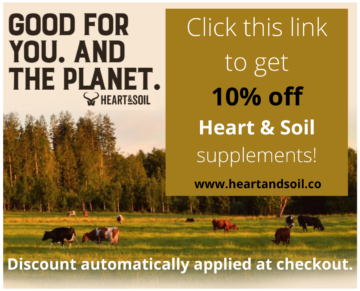
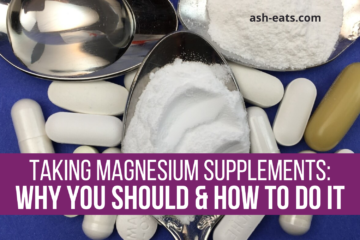

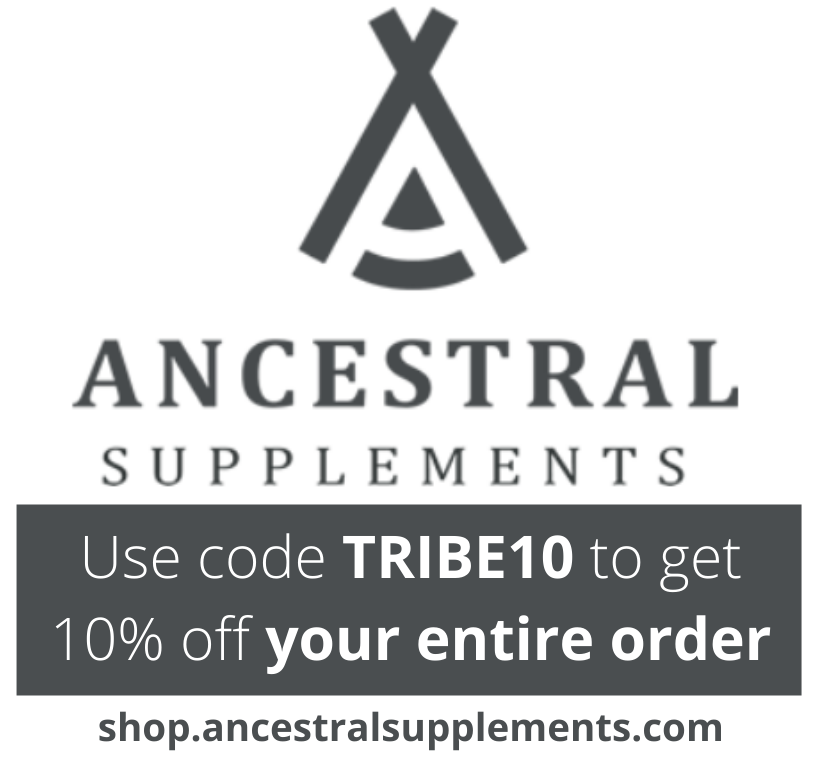
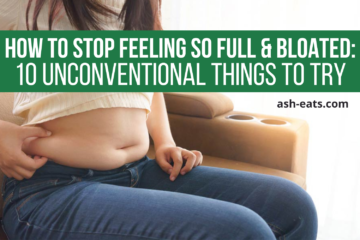

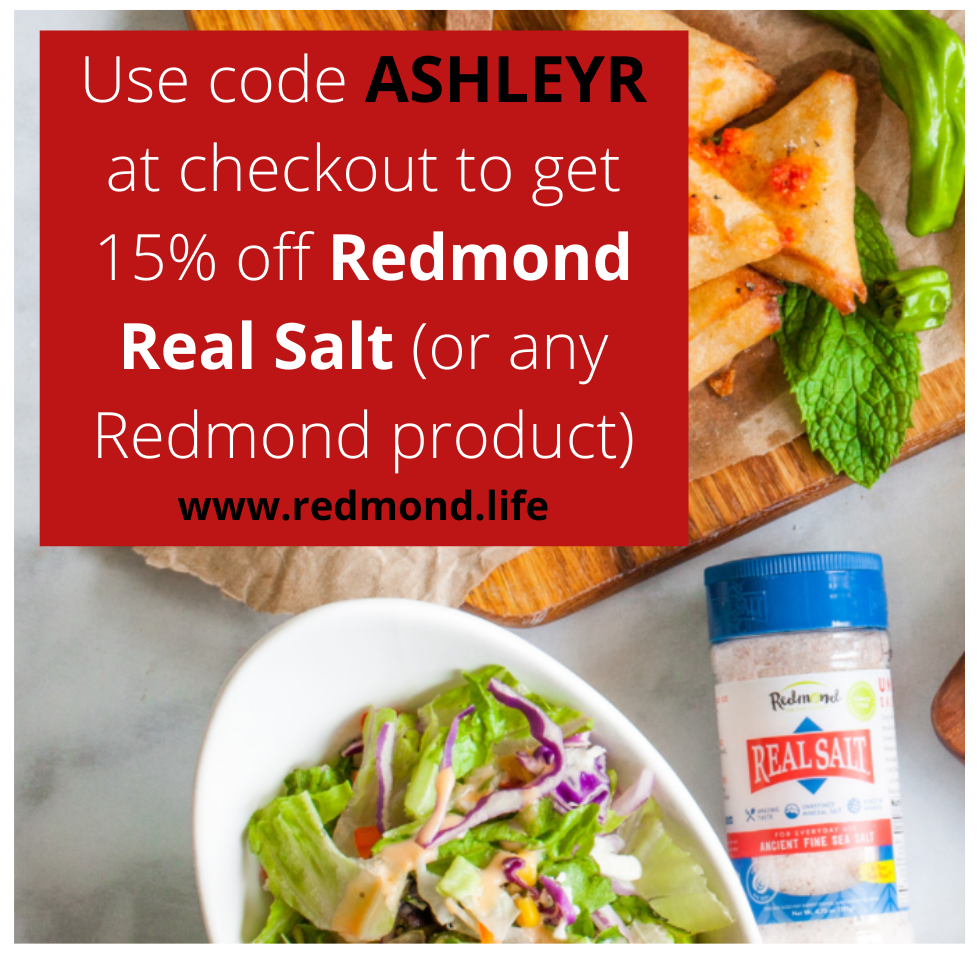

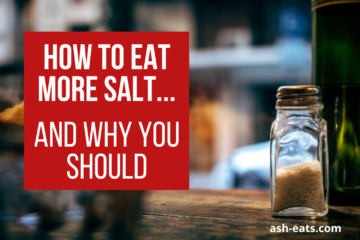


Thank you for such wonderful information! I’m new to your site but I’m so impressed so far! Thanks, again!
Hello! Was wondering how you ensure that you get the correct potassium and sodium ratio. I have high BP and am not sure how to attack this issue. Day two of zero carbs for me.
Author
Hi! I use electrolyte powder in my water once a day or once every other day (https://redmond.life/products/re-lyte-electrolyte-mix?afmc=19v) and salt 100% of my other water. I put either 1 tsp or 1/2 tbsp of salt in 32 oz of water. I find that when I eat foods rich in potassium (milk, cheese, avocados, dates, etc.), I need more salt to compensate as too much potassium will usually make me feel nauseous. So I usually drink more salt water or increase the amount of salt in my water when I feel like something is off. I don’t pay too much attention to getting a certain electrolyte ratio in. I put more emphasis on how my body feels. My body craves high amounts of sodium, so I focus on getting enough of that. But to level things out and make sure I’m in balance, taking the electrolyte powder helps.
Hey, I currently am doing the animal based and only eating meat, fruit, and honey. But, after lunch when I eat meat and fruit, I start to feel super tired. I started drinking some electrolytes but am still feeling that way. Do you have any suggestions as to what it may be? Maybe no enough electrolytes?
Author
When I’m feeling tired/fatigued (especially post-meal), it’s usually because I’m low on salt/electrolytes. To combat this, I salt 100% of my water and supplement with electrolytes (LMNT and Redmond RELYTE) often. Maybe try upping your electrolyte supplementation, specifically sodium. It’s different for every individual, but I personally need an INSANE amount of salt/electrolytes just to feel well. That’s why I salt (or add electrolyte powder) to nearly 100% of my water. If you want to learn more about how/why I do that, I share about it here: http://ash-eats.com/how-to-eat-more-salt-and-why-you-should/. I also have info on my “Minerals” IG highlight about mineral supplementation.
HI Ashley
I have been on the carnivore diet now since January. Everything has been going very well and I enjoy it and really have no plans of changing how I eat. But I do have one question my cholesterol is very high. Not only has it gone up during this diet but it is also genetic. Is there something that you do that helps your cholesterol or do you find it to be a concern. I am doing the ancestral supplements and have added the fish egg supplement. My cholesterol level is 272. Please let me know what you do I’m very interested.
Author
Ha – that is my exact cholesterol level! 272. I got it checked about 1.5 years ago. I’m not concerned. I feel the best I ever have in my life. Paul Saladino has a bunch of YouTube videos on cholesterol available on his channel. I recommend giving them a listen: https://www.youtube.com/watch?v=kJnDjVwcbeE
Thank you for this thorough and helpful description. I’m excited to try some of your recipes 🙂
Hi. I appreciate the post and am trying to plan my move into this AB lifestyle along with my wife. My end goal would be to grow as much of this as I can to cut on cost. Is there a more comprehensive list available regarding fruits and whatnot such as grapes for instance? Are grapes low, medium, or high toxicity? I appreciate the help. I did order the carnivore code cookbook from Dr. Saldino, but I would like to find a much more in-depth resource focusing on the AB diet that includes fruits and isn’t strictly carnivore. I hope this all makes sense. Thanks again!
Author
This is a good question. I haven’t found anything more thorough/comprehensive regarding fruits (as I’ve wondered this myself). I’ve seen Saladino eat grapes, but they’re not listed anywhere on his lists. I think most fruits are deemed “okay,” but starting out, maybe just prioritize the fruits on his list and the ones you tolerate.